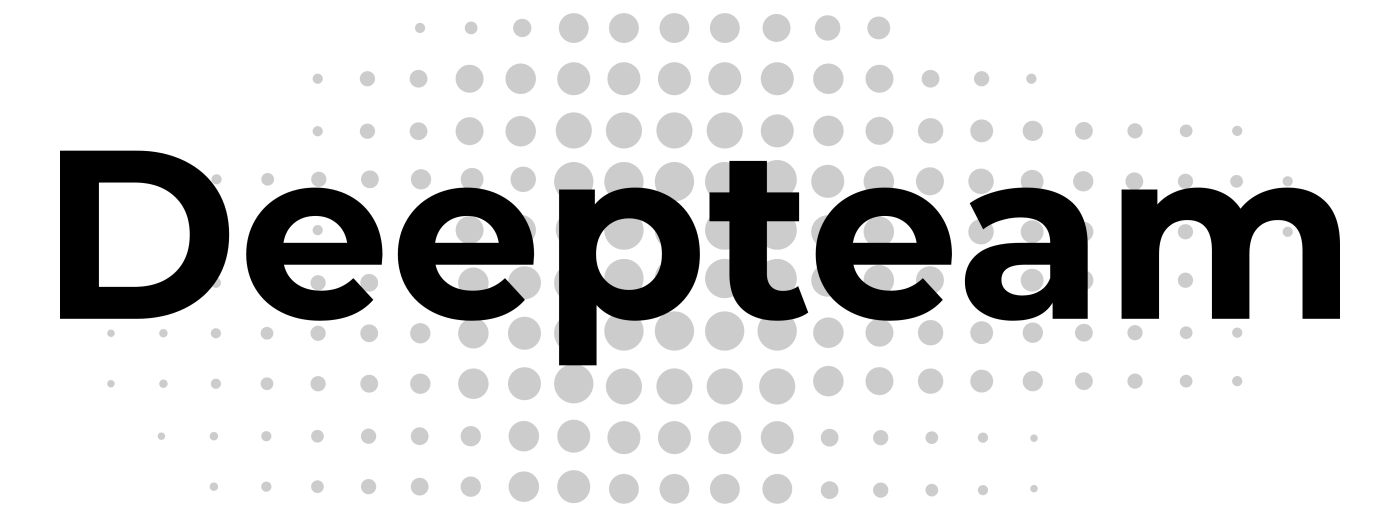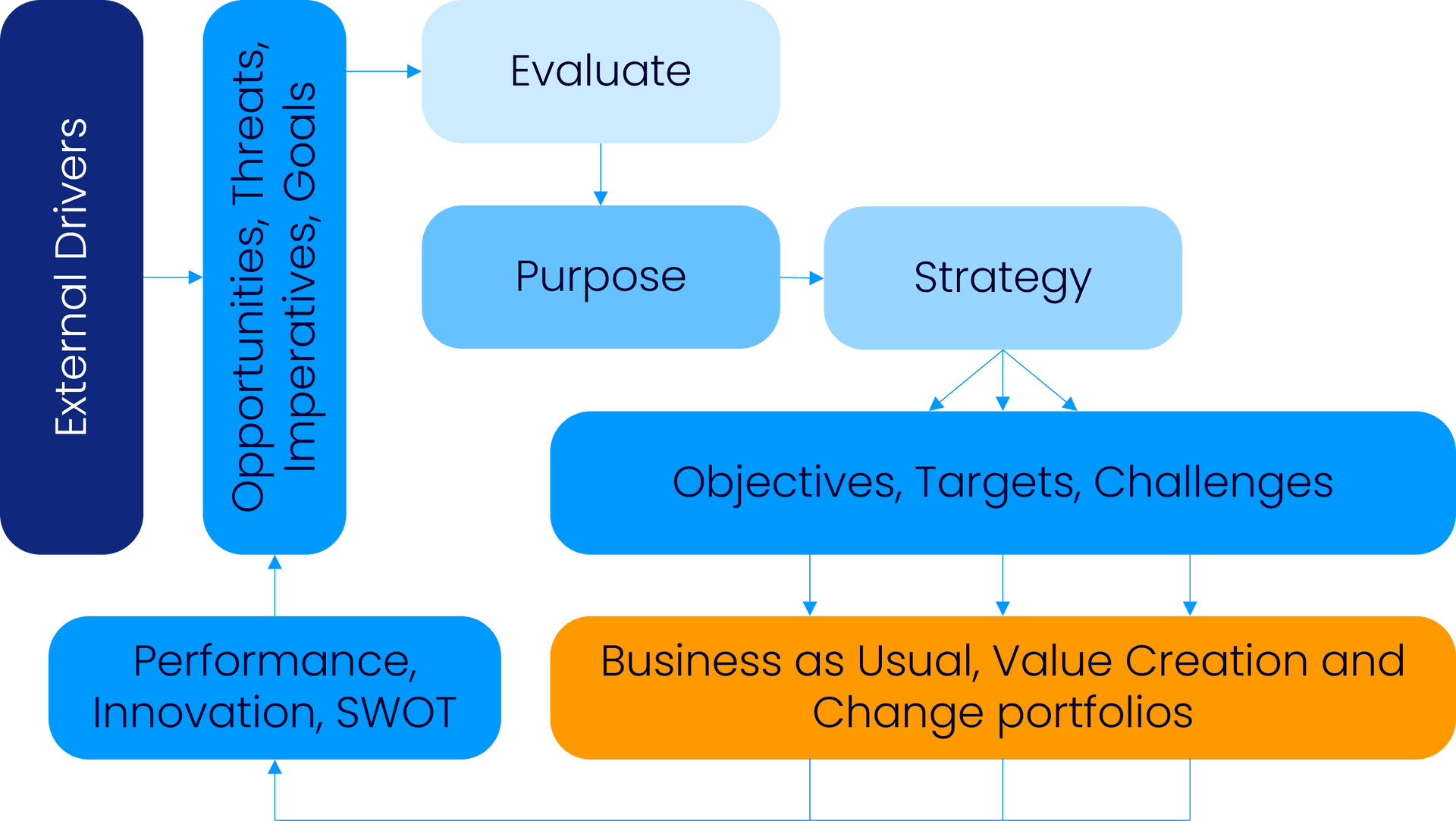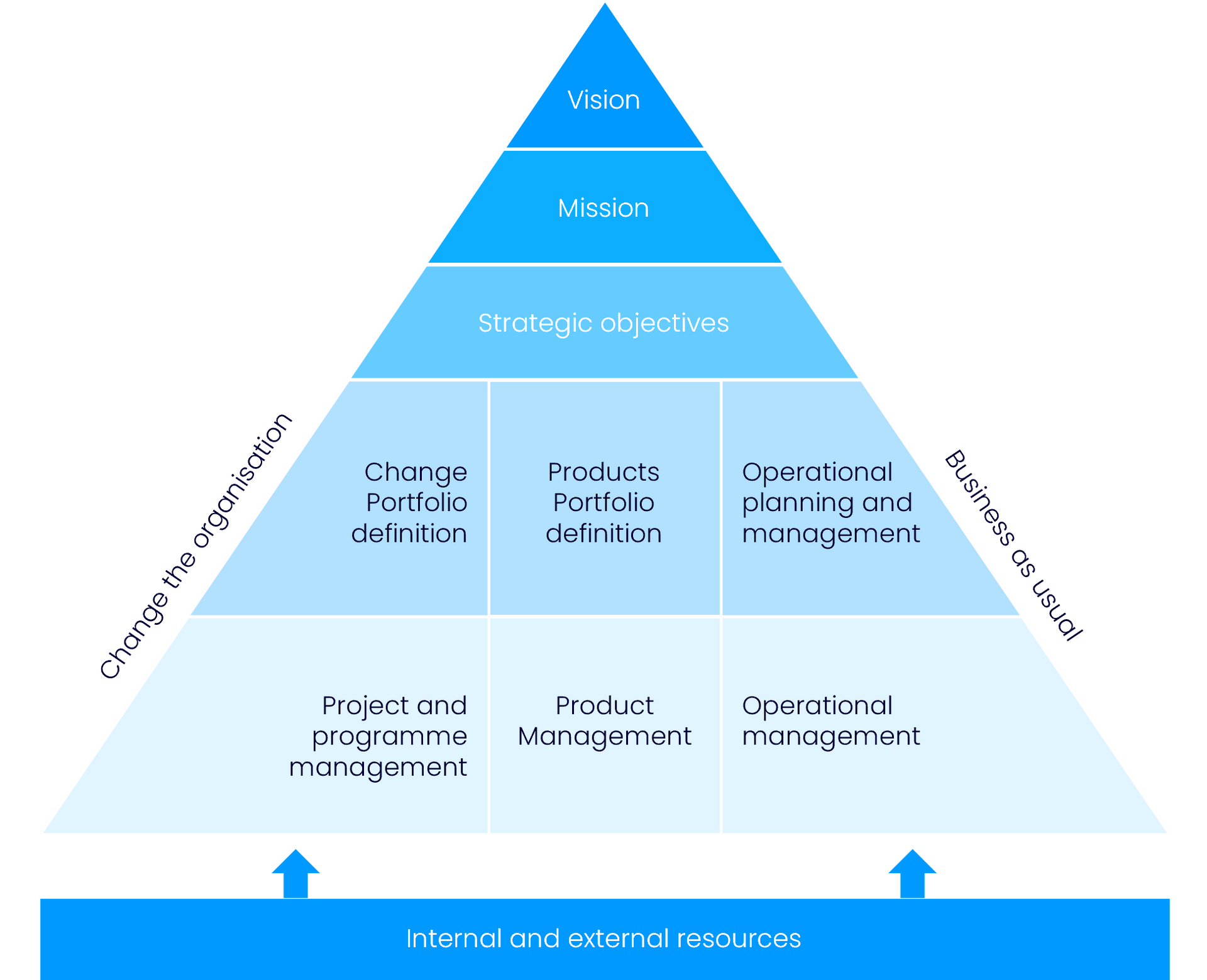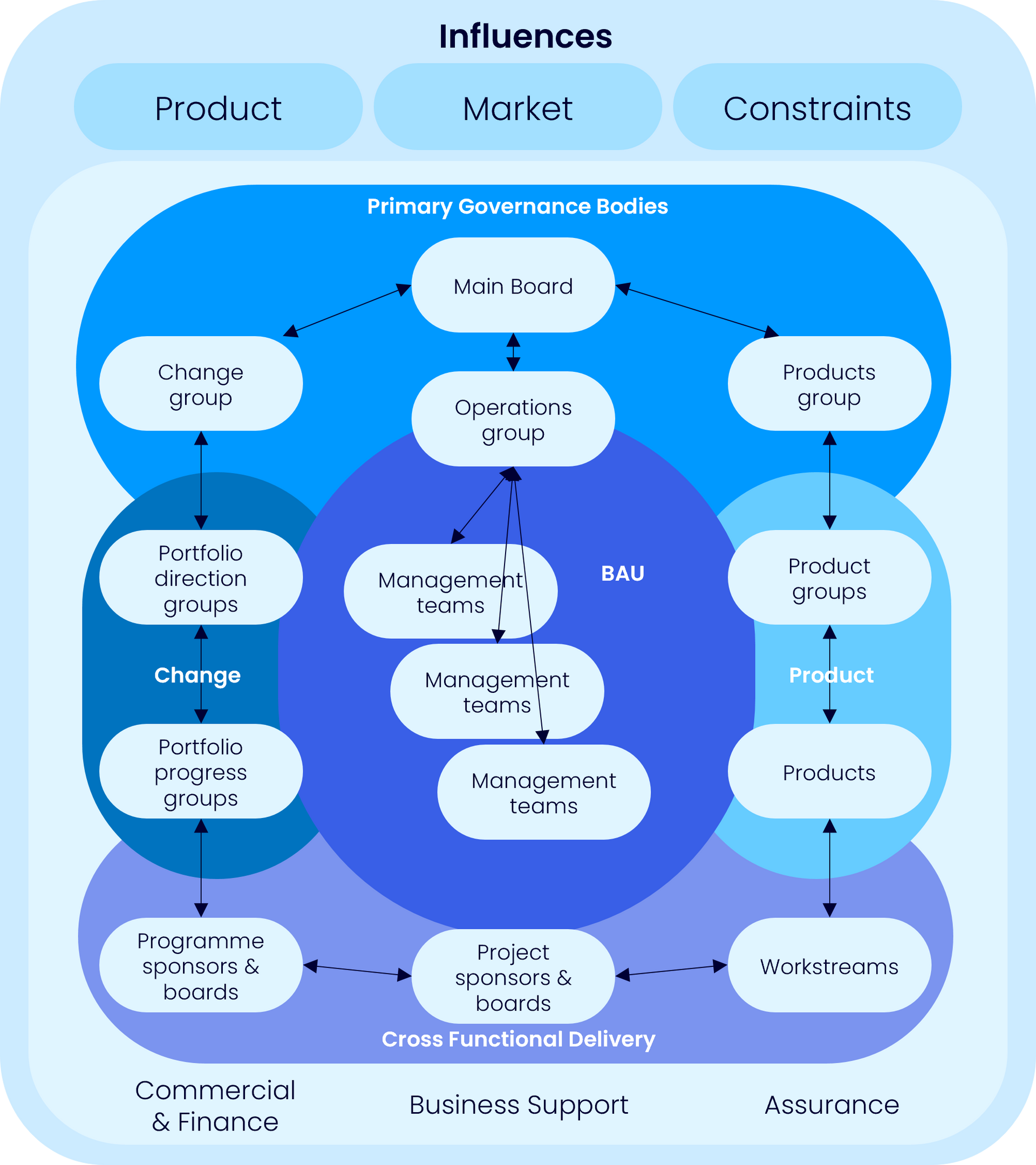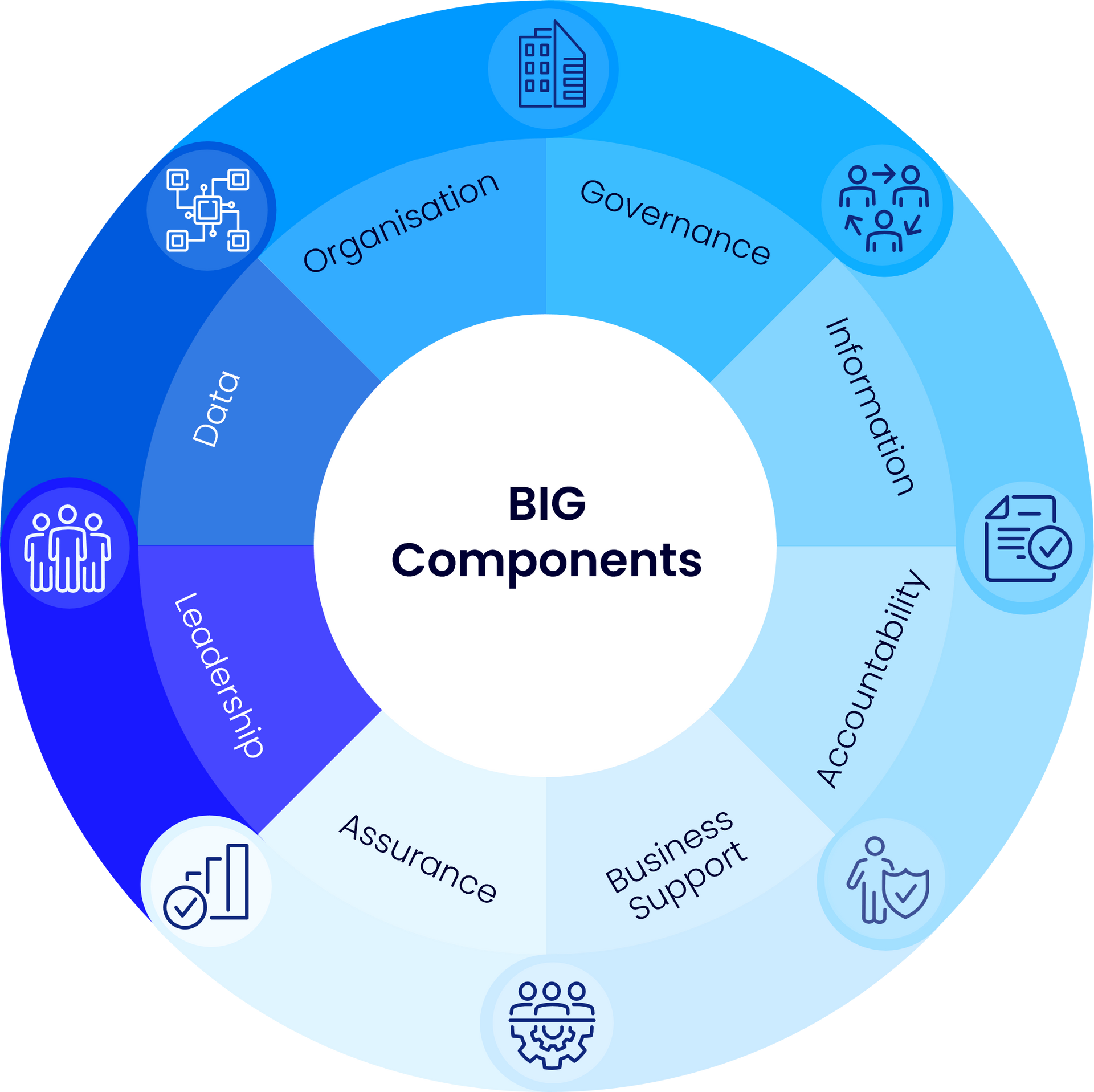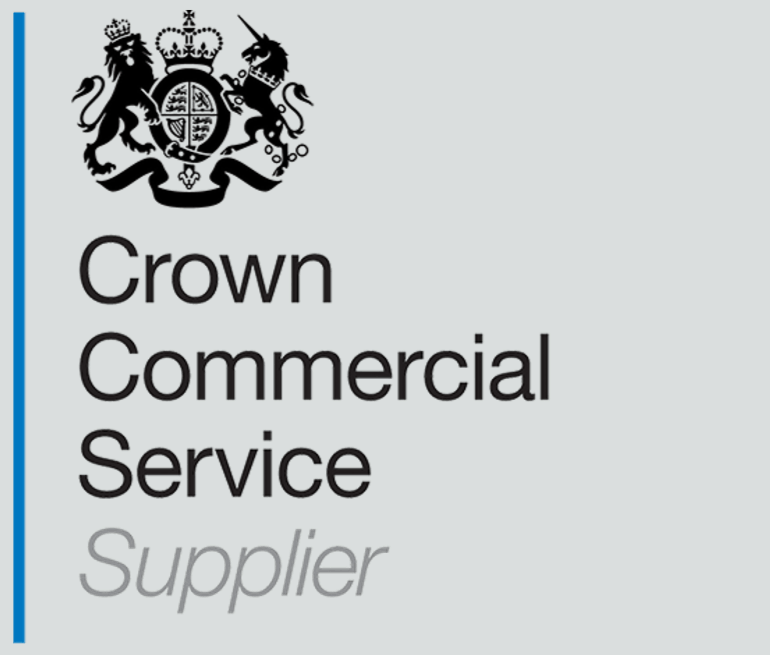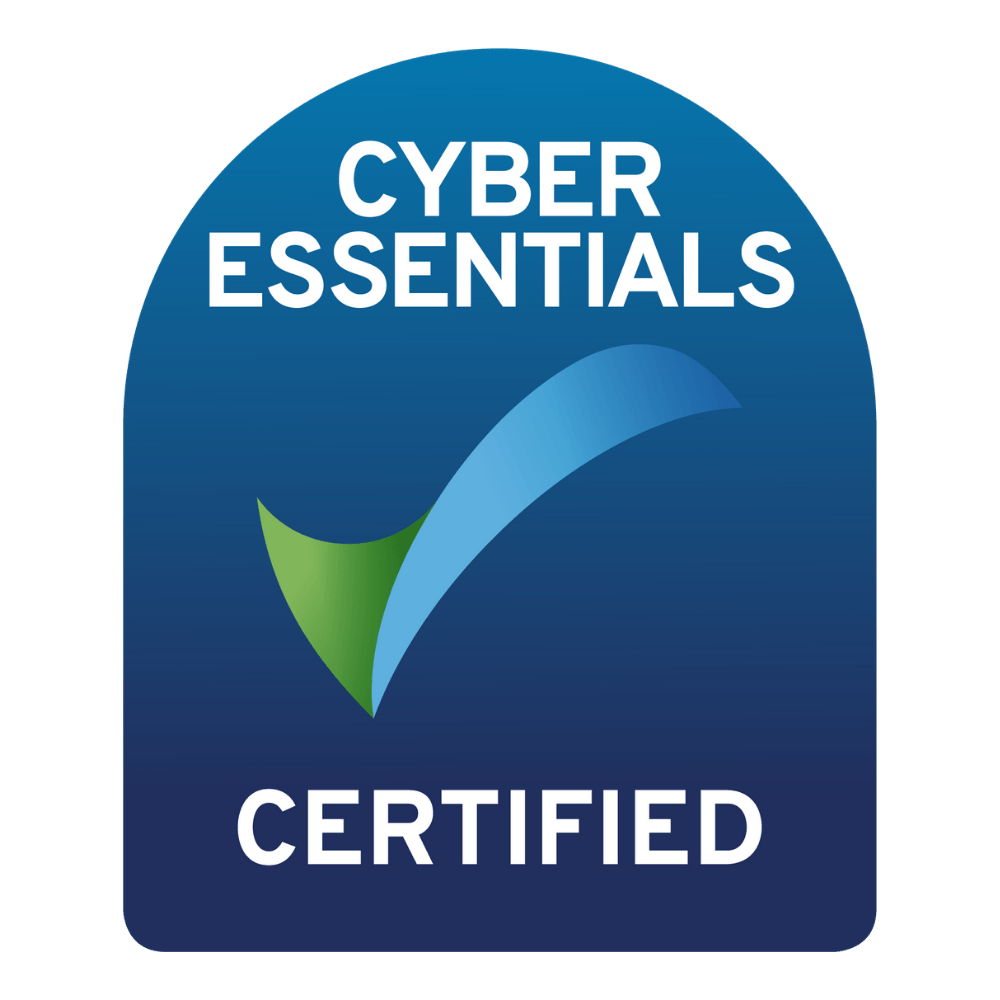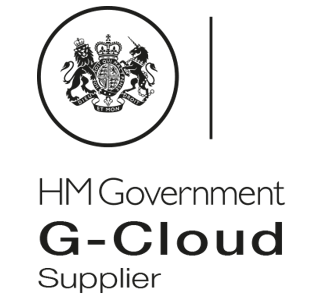What is BIG?
Business Integrated Governance (BIG) refers to a comprehensive approach to managing and aligning corporate governance within an organisation. It involves integrating governance principles, practices, and structures throughout business operations and decision-making processes.
The aim is to help organisations achieve purpose by connecting strategy to delivery while also continuing to achieve performance of business as usual and value generation workstreams. The BIG Model was originally conceived as a framework the portfolio, programme and project (P3) management community could use with departments, finance and executives in relation to connecting project delivery more effectively into central operation of an organisation. A Portfolio, Programme and Project Management focused version is published in Praxis.
The model has been developed since 2018 through a network of over 670 professionals, with contributions of time, content and wisdom from over 130 people. It is defined by the
BIG CIC (a Community Interest Company - which was originally a club called the Core P3M Data Club) and is publicly available from its website. There is an introductory
YouTube video to and a well-established LinkedIn
Group. You can volunteer to help
here and there is a useful
Glossary.
Our organisations are traditionally built and structured to carry out our purpose - cascading objectives, targets and challenges through director domains into Management Teams.
However, some strategic objectives require collaboration cross-functionally. This poses a challenge to a structured / hierarchical decision-making framework, as choices have to be made within domains and their Management Teams as to what to work on - e.g. the local business target, or the strategic objective. The risk is that important strategic workloads may be prioritised differently across different domains and Management Teams, meaning strategic priorities are not carried out, or coordination of them is made more difficult.
Therefore, key to cascading from strategy to delivery, and to managing the related priorities is an effective governance framework where communication down (and back up) hierarchies, and along dependencies is a key focus.
A BIG Framework provides a consistent Governance and delivery model across all business areas governing portfolios, programmes, products, projects and business as usual workstreams directed by a Main / Executive Board.
It recognises Accountability is key to governance and that it often spans across the organisational hierarchy traditionally causing prioritisation and dependency management difficulties and is not always mapped and managed. It assumes close collaboration with Commercial and Finance, and Assurance teams.
The
BIG Framework provides a way to integrate
Models, Methods, Components and Principles to enable a
Company Culture. It is a toolbox to deliver solutions with, not a solution itself. The 'solution' for this is an ecosystem with
Organisation,
Governance, Accountability, Management Information and Data,
which is orchestrated by an effective
Business Support function positioned correctly in the organisation..
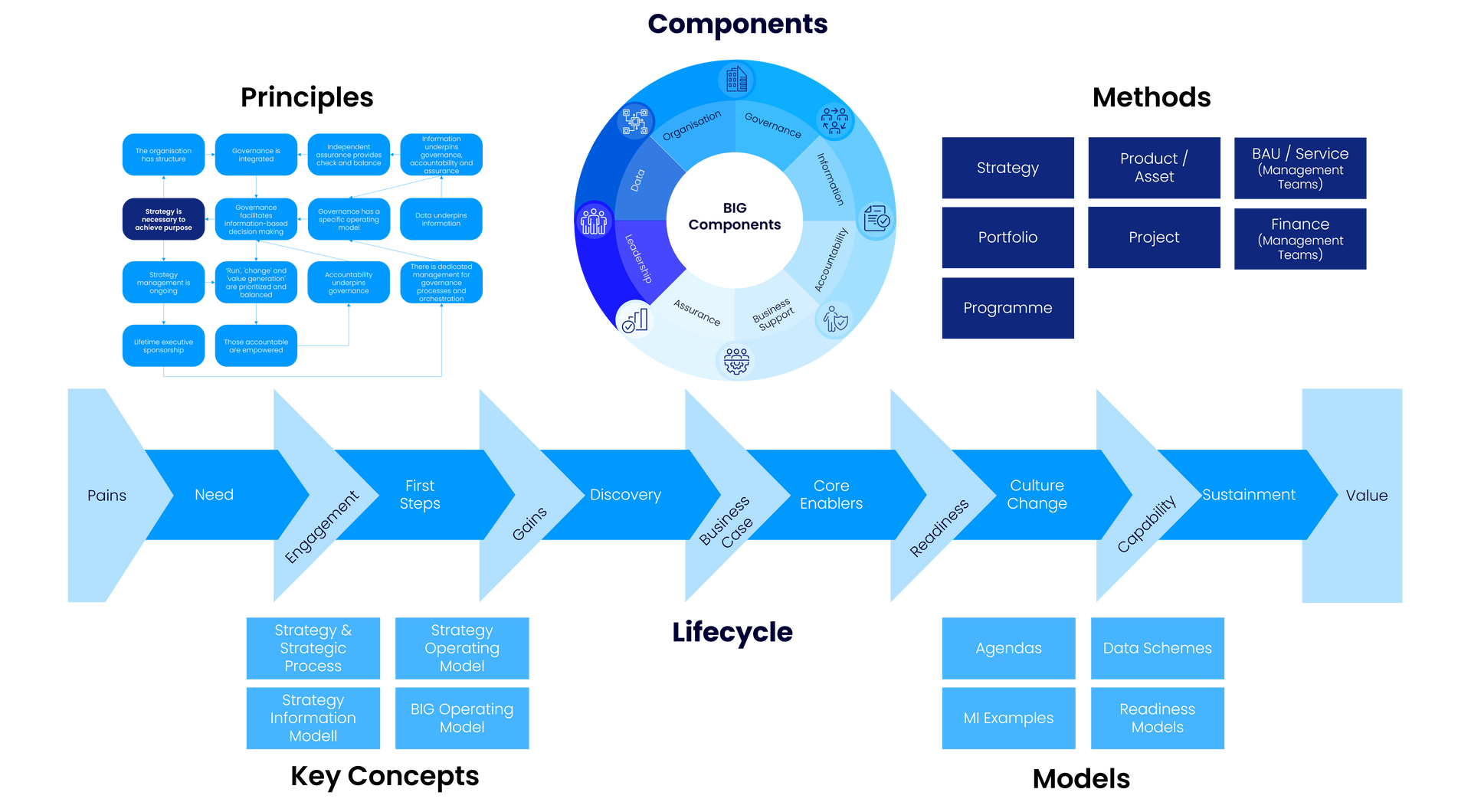
Models are examples to follow or imitate. Within BIG, there are many Models to use (e.g. Agendas / MI examples for Accountability Nodes, data schemes etc) but there are many models beyond BIG that can be used an integrated governance framework.
Methods provide particular procedures for accomplishing or approaching something. BIG references some, including strategy, portfolio, programme, product and project management methods. Across these BIG references risk, benefit, and resource management (to name a few). Methods are mostly maintained outside the BIG Framework by other professional bodies.
- Strategy is necessary to achieve purpose
- The organisation has structure
- Strategy management is ongoing
- Governance is integrated
- Governance facilitates information-based decision making
- ‘Run', 'change' and 'value generation' are prioritised and balanced
- Governance has a specific operating model
- Accountability underpins governance
- Those accountable are empowered
- Data underpins information
- Information underpins governance, accountability and assurance
- There is dedicated management for governance processes and orchestration
- Independent assurance provides check and balance
- Lifetime executive sponsorship
These principles have been aligned to those within ISO 37000:2021 - Governance of Organizations. This alignment has been presented here.
Principles give us understanding of our readiness for integrated governance, but at some point, the task of building an operating model has to begin. Hence the BIG Model contains definition of components with which to engage our organisations, to capture our 'current state' with - and use to envision future state and roadmap - to rework or build as appropriate.
Components are parts or element of a larger whole. Components in BIG are elements of or assets within the operating model and infrastructure which fit within the BIG framework. Once a vision and roadmap are established it becomes possible to identify solution components required, and the change process necessary.
There are many moving parts to Integrated Governance which require cooperation across domains, and leadership / sponsorship at the highest level.
However, BIG may be achieved:
- Strategically - to create / sustain line of sight from strategy drivers to objectives, targets and challenges to achieve greater strategy delivery and measurable business agility
- Collaboratively - between several functions or departments to achieve integrated portfolio or programme management
- Tactically - to enable effective governance for a significant and complex change programme / joint venture / product portfolio
It is easy to suggest that more effective strategy delivery can be achieved with better project management, improved change capability, PMO, PPM software, each of which can be tackled tactically or from one point of view. However, the fact is strategy delivery spans the organisation and is about performance AND change. The integrated answer lies in Integrated Governance and is best adopted with a strategic approach which may start tactically, develop collaboratively, but ultimately, approached strategically.
The suggested lifecycle is iterative:
- Achieve consensus on the need to do something
- Vision, Roadmap Business Case
- Prepare Core Enablers
- Deliver Culture Change
- Manage sustainment
Please see our pages on roadmap, and engagement to see how to get the ball rolling.
